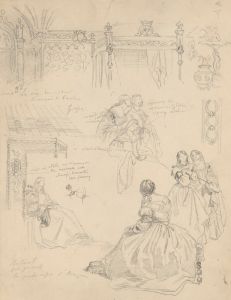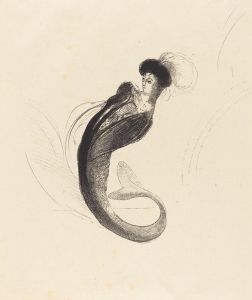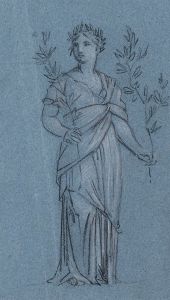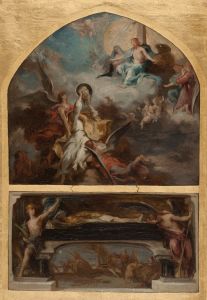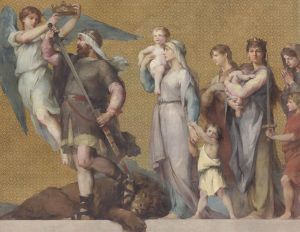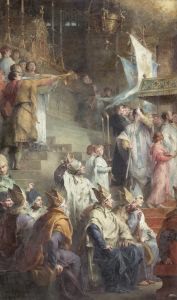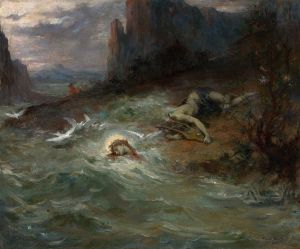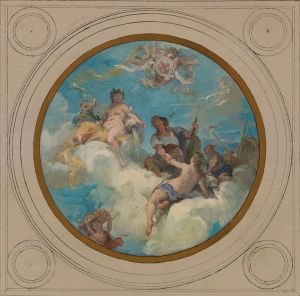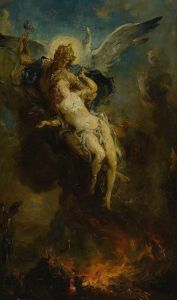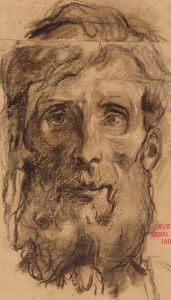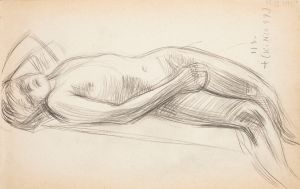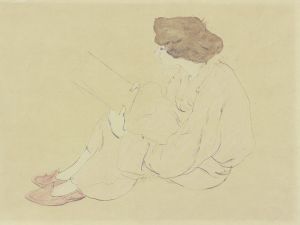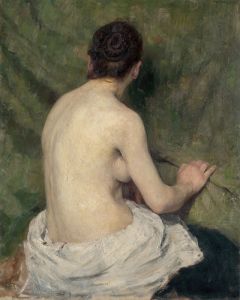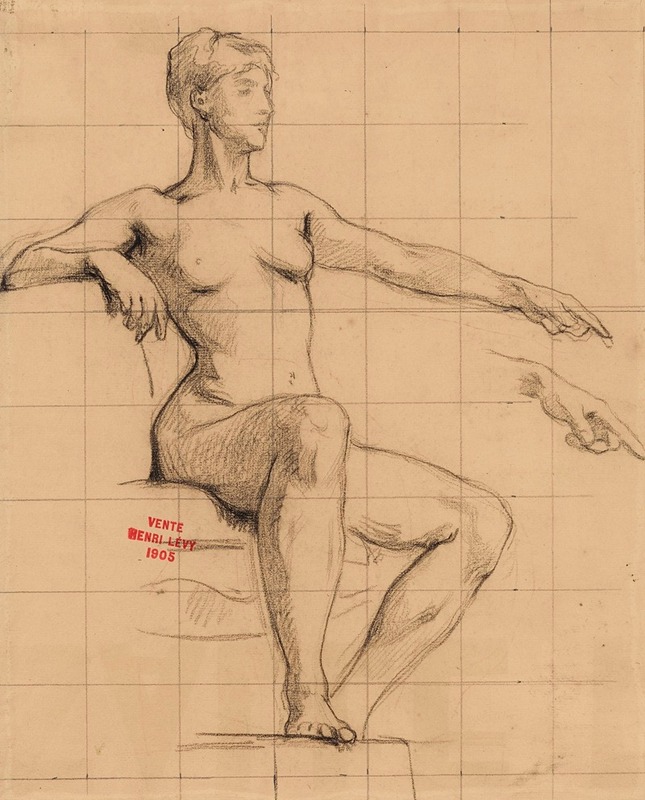
Etude de jeune femme nue assise pointant l’index gauche vers l’avant
A hand-painted replica of Henri Leopold Lévy’s masterpiece Etude de jeune femme nue assise pointant l’index gauche vers l’avant, meticulously crafted by professional artists to capture the true essence of the original. Each piece is created with museum-quality canvas and rare mineral pigments, carefully painted by experienced artists with delicate brushstrokes and rich, layered colors to perfectly recreate the texture of the original artwork. Unlike machine-printed reproductions, this hand-painted version brings the painting to life, infused with the artist’s emotions and skill in every stroke. Whether for personal collection or home decoration, it instantly elevates the artistic atmosphere of any space.
Henri Léopold Lévy was a French painter born in 1840 and known for his contributions to the academic art movement in the 19th century. He studied at the École des Beaux-Arts in Paris, where he was a pupil of François-Édouard Picot and Alexandre Cabanel, both prominent figures in the academic art scene. Lévy's work often depicted historical, religious, and mythological subjects, aligning with the academic tradition's emphasis on classical themes and technical precision.
One of Lévy's works, "Etude de jeune femme nue assise pointant l’index gauche vers l’avant," translates to "Study of a Young Nude Woman Sitting Pointing the Left Index Finger Forward." This piece exemplifies Lévy's skill in rendering the human form with anatomical accuracy and a keen attention to detail, characteristics that were highly valued in academic art. The painting likely served as a study, a common practice among artists of the time to refine their technique and understanding of the human body.
The subject of the painting, a young nude woman, is depicted in a seated position, with her left index finger extended forward. This pose not only showcases Lévy's ability to capture the subtleties of human anatomy but also reflects the academic tradition's focus on the idealized human form. The use of a nude figure in art was a staple of academic training, as it allowed artists to demonstrate their mastery of proportion, light, and shadow.
Lévy's work was well-received during his lifetime, and he exhibited regularly at the Paris Salon, the official art exhibition of the Académie des Beaux-Arts. The Salon was a crucial platform for artists to gain recognition and establish their reputations. Lévy's participation in these exhibitions indicates that his work was appreciated by both critics and the public.
The painting's composition, with the figure's gesture of pointing, may suggest a narrative or an invitation for the viewer to engage with the artwork on a deeper level. However, without additional context or documentation, the specific intention behind this gesture remains open to interpretation. It is important to note that many academic studies were not intended to convey a particular story but rather to explore form and technique.
Lévy's contribution to the art world extends beyond his paintings. As an academic artist, he played a role in the broader movement that sought to uphold traditional artistic values during a time of significant change in the art world. The late 19th century saw the rise of various avant-garde movements that challenged the conventions of academic art, making Lévy's adherence to classical themes and techniques a testament to the enduring appeal of these traditions.
In summary, "Etude de jeune femme nue assise pointant l’index gauche vers l’avant" is a reflection of Henri Léopold Lévy's dedication to the academic art style. Through his meticulous study of the human form, Lévy contributed to the preservation and celebration of classical artistic principles during a period of evolving artistic expression.





